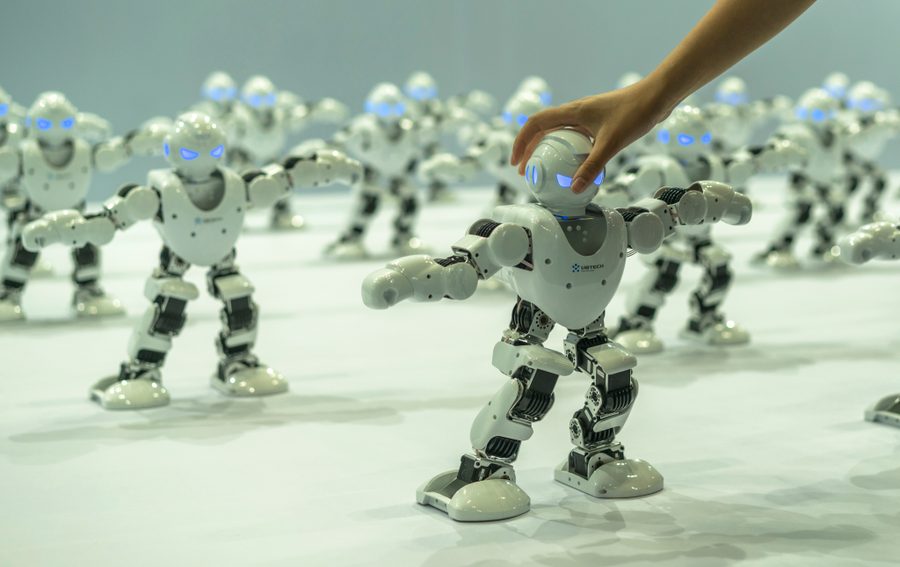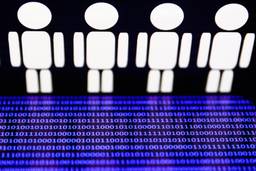The Real A.I. Fight Is About Who Gets the Gains
It’s not labor against technology. It’s shared progress versus inequality.
Hamilton Nolan

AI is a labor issue. Maybe we’ll get lucky and it will prove to be a marginal labor issue. Or maybe it will prove to be an existential, epochal labor issue on par with industrialization or globalization, each of which revolutionized their own eras of work. Before we get completely immersed in the battle over how AI will affect workers, though, it is important to frame the playing field correctly. This is not a fight between a backwards-looking labor movement on one side, and technological progress on the other. Rather, this is a question of where the wealth and efficiency gains created by AI will flow.
Want to change the world? Share.
It is easy to cast the workers of today bristling against the intrusions of AI as just the latest iteration of a very old story. They are the mythical Luddites smashing looms out of ignorance; they are the grumpy artisans displaced by the wondrous productivity of factories; they are the horse and buggy drivers unwilling to acknowledge the supremacy of automobiles. This is an attractive story from the perspective of capital. It views technological change as an almost biological process, a march towards progress ushered along by the helpful business people who rearrange society for greater efficiency and reap the just rewards of their cleverness. Workers are unfortunate byproducts left behind by capitalism’s inherent creative destruction. It is understandable that they fear change, sure, but their primitive self-interest should not be catered to. The mark of a leader is to crank up total productivity even if it means relegating specific pockets of yesterday’s work force to dire poverty. This was the triumph of neoliberalism, and we are all living in its wake.
This story, like most fairy tales, contains a grain of truth, and a greater measure of deception. It is true that working people across a whole rainbow of industries — media, marketing, law, architecture, entertainment, hospitality, transportation and more — are nervous about what AI will mean for their careers. And for good reason! This is a technology that combines a high degree of uncertainty about what its capabilities will be with a high degree of certainty that whatever those capabilities are, employers will use them to try to get rid of human employees. The strikes carried out by Hollywood writers and actors last year were spurred to large degree by this common sense calculation. Nobody is sure exactly what companies will be able to do with AI, but they are sure that companies will do things that screw workers and benefit owners if they are left to their own devices.
In my own industry of journalism, for example, the difference between “AI as a tool to help journalists do better work” and “AI as a cheap, shoddy, unethical replacement for human journalists” will come down to the question of whether labor power can force companies to walk the right path. In industries without strong unions, the only hope may be government regulation of how AI gets implemented. Either way, the time to act is now. The International Monetary Fund says that 40% of the workers in the world have jobs that “will be affected by artificial intelligence.” That’s a lot of people whose fears are perfectly justified.
Working people and the labor movement that empowers them need to tell a different story. A story that contains the hard-nosed realism that the business world likes to lay claim to, along with a concern for humanity that the business world lacks. Efficiency-boosting technological change is incredibly difficult to stop from spreading. The internet, globalization, and ride-hailing apps are all a testament to this. Capitalism will see to it that things that increase productivity spread rapidly. AI (whatever the useful part of it turns out to be) will fall into this category. As with all new technologies, unions can be vigilant to make sure that its rollout is not a careless, abusive, race to the bottom. But that is only a secondary battle. The most important thing that organized labor must do is to ensure that the gains produced by AI — economic gains, efficiency gains, productivity gains — are shared with the workers, rather than scooped up by management and investors.
Imagine, for argument’s sake, that AI enables a company to do the same amount of work with half of the workers in half of the time. The wonders of science! Now imagine two different paths for this transition: In one, the company fires half the workers, cuts labor costs in half, doubles productivity per hour, and all of the profits created by that change accrue to the company’s investors, and to the executives who happily laid everyone off. In another scenario, each worker whose job is replaced by AI is retrained for another internal role, allowing the company to expand (or given a hefty severance package and training for another career), and the remaining workers are able to work fewer hours per week for the same pay thanks to the efficiency gains, and the increases in profits are shared out among the work force, either through profit sharing or employee ownership of the company. In the first example, AI has exacerbated inequality and made workers’ lives more precarious. In the second example, it has done the opposite. It is still early enough in the life of this technology that both paths are open to us.
This is the real battle at hand. When Hollywood screenwriters strike to prevent AI-written scripts, or Las Vegas hospitality workers warn of the downsides of robot baristas, they are not ignorant primitives who fail to grasp the net productivity gains this new technology will produce. On the contrary, they grasp perfectly that if they do not exercise their own power, all of those beautiful gains will go to the top, and they will be left with nothing. Beware of anyone who gets rich using AI who characterizes workers as backwards anti-technologists. It is queasily reminiscent of the brilliant economists who explained that globalized free trade would produce globalized gains, without considering the fact that all of those gains would go to 1% of the people. This is not a debate over technology, but one of political economics: Will advances in automation save us all from drudge work and make our lives easier? Or will it just obliterate jobs and make the lives of millions of people harder?
To the extent that AI turns out to be real, it should be viewed as a public good, not a private one. (America has an awful track record on this, but it’s never a bad time to change that.) Unions will not succeed in keeping AI out of their industries, but they can certainly succeed in forcing companies to spread the benefits of AI to all. Whether it’s making gravel or semiconductors, every business takes in a certain amount of labor and spits out a certain amount of profit, which it then divides between workers, managers and investors. If factory lines or free trade pacts or artificial intelligence produce more profit for less work, fine — but the workers have more right to those profits than any other stakeholders. The horse and buggy drivers won’t be so cranky if they know that they will have jobs driving the fancy new trucks. Technology works for people, not the other way around.
Hamilton Nolan is a labor writer for In These Times. He has spent the past decade writing about labor and politics for Gawker, Splinter, The Guardian, and elsewhere. More of his work is on Substack.








